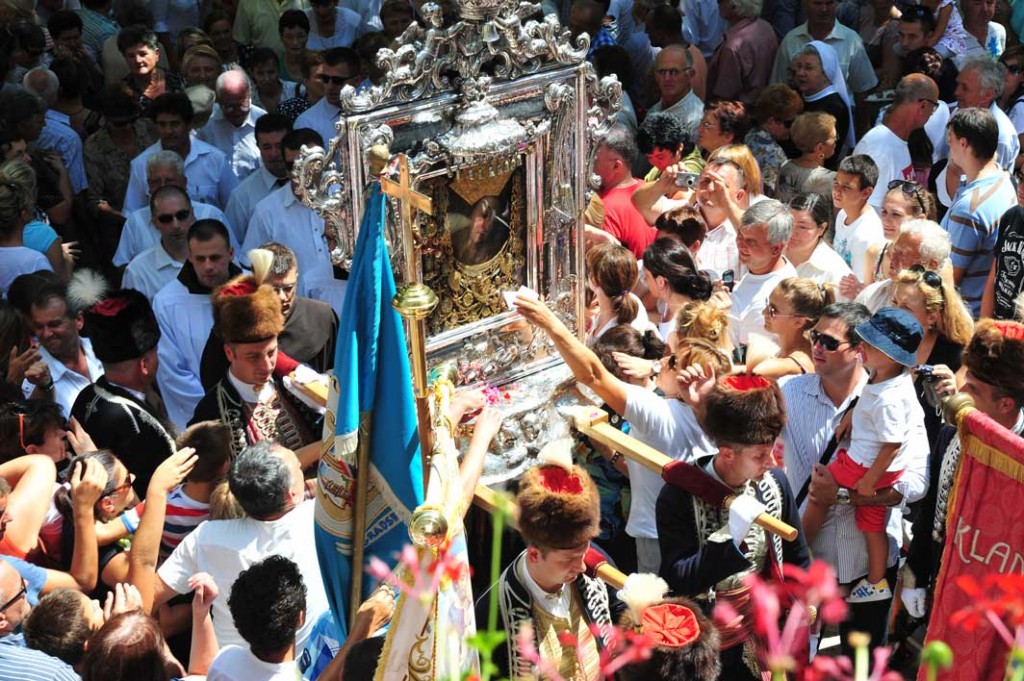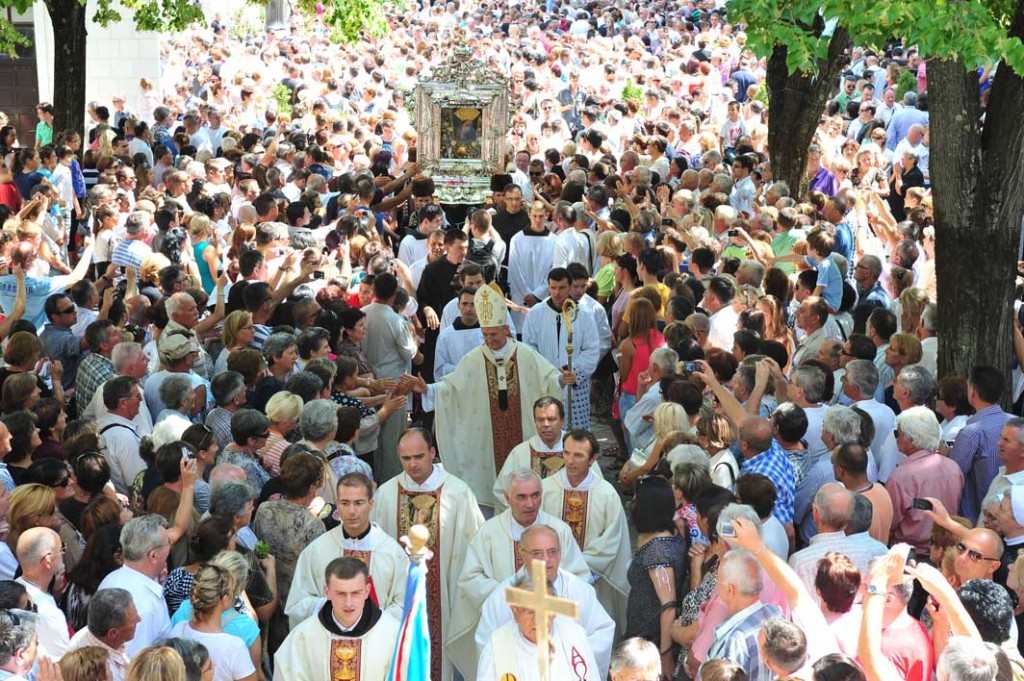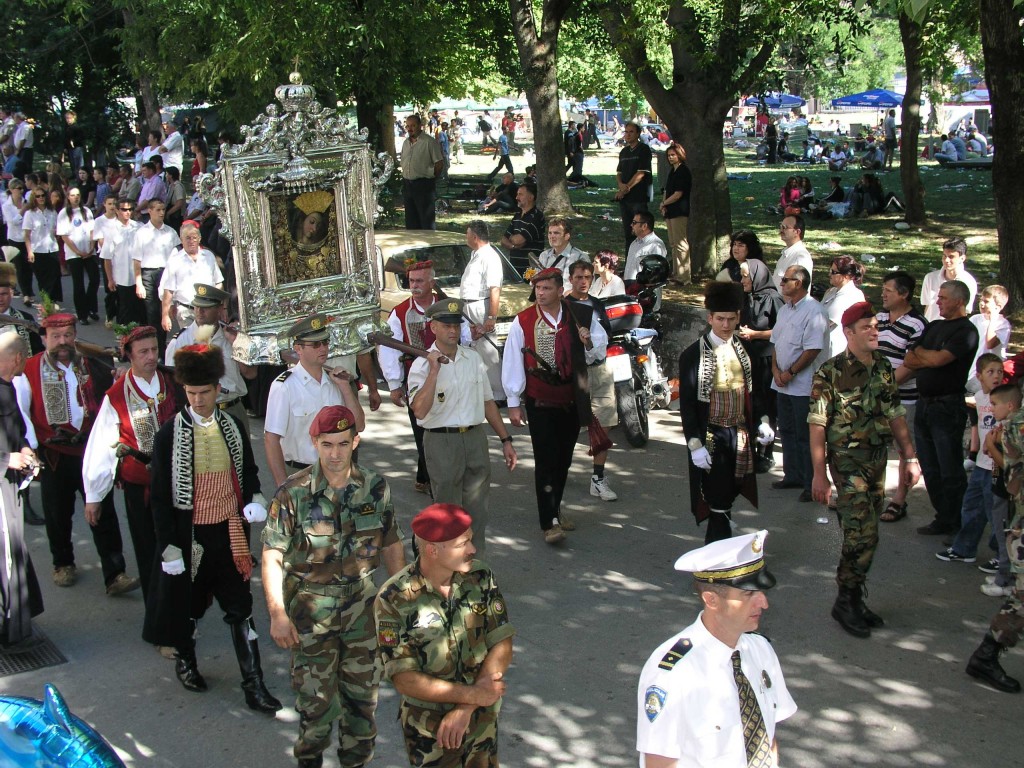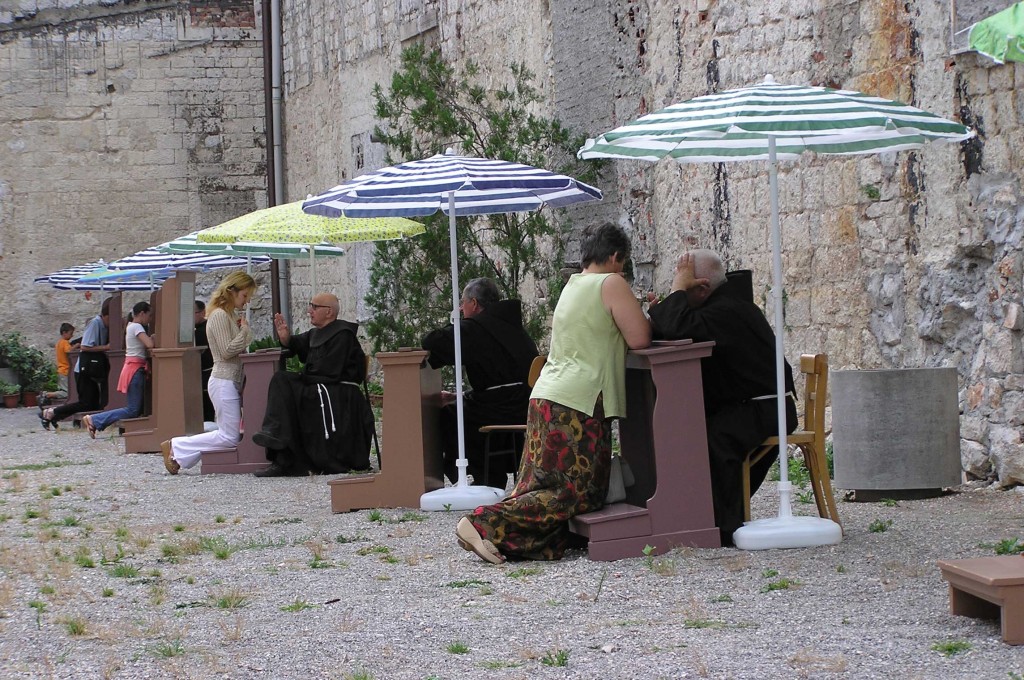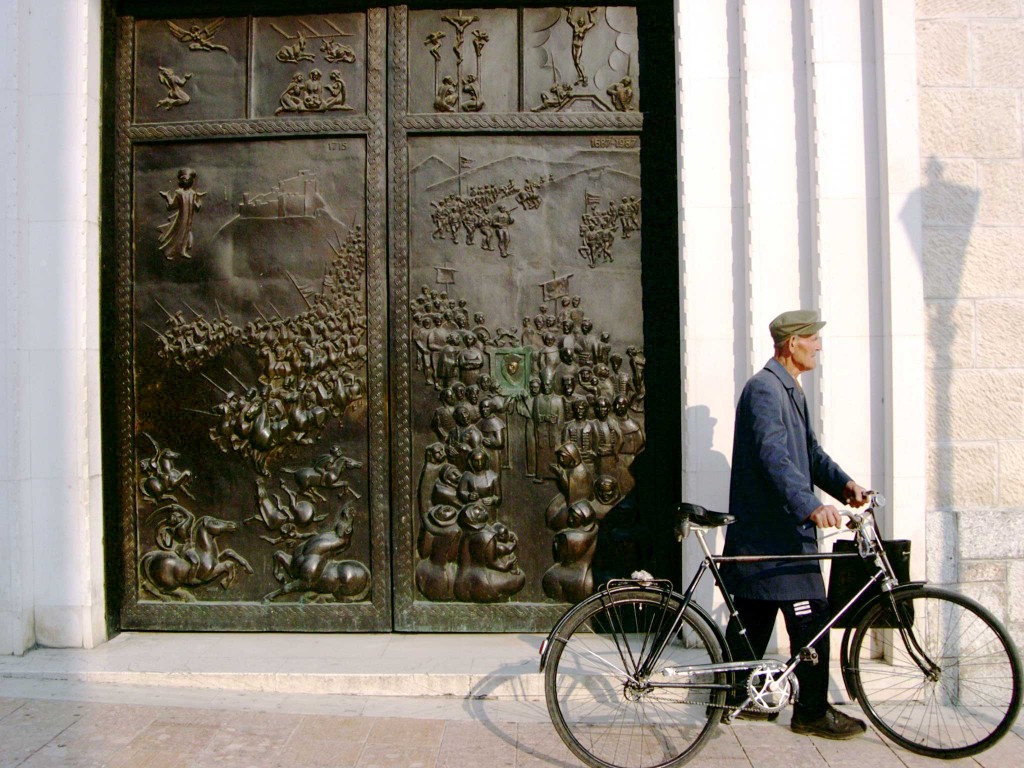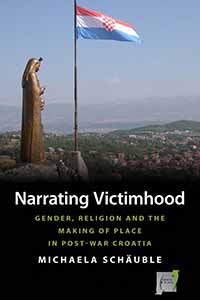
The 1991-1995 war following the dissolution of socialist Yugoslavia is referred to as “Homeland War” (Domovinski rat) in Croatia. It is narrated both as a struggle of independence and a defense against aggression and occupation by Serbia. Postwar social and political processes continue to be dominated by competing nationalisms, aspects of which come into focus in Narrating Victimhood: Gender, Religion and the Making of Place in Post-War Croatia, published earlier this month. In the following photo essay, author Michaela Schäuble gives readers a visual glimpse into the role religion, and Marian veneration in particular, plays in these processes in contemporary post-war Croatia.
______________________________
In 2008 a 3m high bronze Marian statue was erected on the hill where the Marian apparition of 1715 allegedly took place, overlooking the whole of Sinj and the Cetinska Krajina. Photo: Michaela Schäuble; this is also the cover photo of the book.
________________________
Every year in August on Assumption Day, called Velika Gospa (lit. “Great Lady” or “Great Madonna”) hundreds of thousands of pilgrims travel to the small Dalmatian town Sinj to worship the Mother of God. The painting is said to have miraculous healing powers and the pilgrims attempt to touch it during the procession to receive a blessing. Photo: Franjevački Samostan Sinj
_________________________
Closely linked to the procession is the commemoration of the alleged Marian apparition in 1715 that has turned the Marian shrine in Sinj into a national pilgrimage site. Several sources indicate that in 1715 a group of around seven hundred poorly armed local defenders resisted the attacks of an estimated thirty thousand soldiers of the Ottoman Empire. According to the legend – as it has been propagated and as it is widely related today – the population of Sinj refused to surrender and prayed to the Marian painting for rescue instead. Eventually the Turks were struck with thirst and dysentery, and at daybreak on 15 August a floating lady in a white dress appeared outside the fortification wall. The attackers were terrified at the sight and took immediate flight. The townspeople of Sinj held that they owed their victory to divine intervention and soon thereafter, the news of the Marian apparition in Sinj spread around the country. The procession at Velika Gospa is celebrated in honor of this historic apparition. Photo: Franjevački Samostan Sinj
____________________________________
Soldiers, policemen, as well as tilters of the local Alka knights’ tournament (alkari) and their squires (momci) in traditional costumes escort the miraculous painting during the Velika Gospa procession in Sinj. Photo: Franjevački Samostan Sinj
_______________________________
Open-air confessions during the annual celebration of Velika Gospa in Sinj. Nobody knows how many pilgrims visit the shrine during the festivities, but in 2005 the Franciscans priests have ordered 120,000 Hosts, estimating that every third person takes the Holy Communion. That would make 360,000 pilgrims per year. Photo: Franjevački Samostan Sinj
___________________________
For the procession on Assumption Day the Franciscan friars dismount the miraculous painting from the altar. It is put on a stretcher and carried through the streets. Apart from hosting this acclaimed Marian shrine, Sinj is also home to one of the country’s largest and most influential Franciscan monasteries. Photo: Franjevački Samostan Sinj
_______________________________
The main gate of the church, a bronze relief crafted by Stipe Sikirica in 1987, tells the history of the Miraculous Painting of Our Lady of Sinj. In an upper segment the portal is divided into four panels each depicting a station in the life of Christ: the Annunciation, the Nativity in Bethlehem, the Crucifixion at Golgotha and the Ascension. The massive folding doors comprise two parts of the depiction. The left wing represents the Marian apparition in the year 1715. In the background, the relief embodies the image of a lady in a wafting robe floating in front of the ancient fortress of Sinj. In the foreground, the artist portrays Ottoman equestrians wearing turbans and swaying scimitars that are put to flight by the local troops. The right wing of the portal displays the dates 1687–1987 in its upper-right corner, and below this is a procession of believers carrying the painting of Gospa Sinjska, headed by a bishop. The images of the hilly landscape in the background – presumably signifying the Dinaric mountain range – and the procession of the painting in the foreground suggest that the relief depicts the exodus of Catholic Croats from Rama to Sinj in the seventeenth century as well as the annual parade at Velika Gospa when the miraculous painting is carried through the streets of Sinj. The mini-replica of the miraculous painting of Gospa Sinjska is shinier than the rest of the bronze relief, indicating that people frequently touch the small image of the Virgin to receive her blessing. Photo: Michaela Schäuble
____________________________
The painting of Our Miraculous Lady of Sinj, with and without adornment. It is an undated work by an unknown Venetian artist, but most probably originates from the early seventeenth century. It was brought to Sinj in 1687 by a group of Catholic refugees from Rama in Central Bosnia who fled Ottoman attacks. It was in the course of this exodus that the painting first acquired a reputation for miraculous powers and for protecting the refugees from further perils. After the legendary battle of 1715 when the prayers of Marian intercession were answered, the painting reached the height of its fame as an icon of divine protection. As a sign of gratitude, the people of Sinj and the Cetina district donated the crown and a wreath of twelve silver stars as adornment. Photo: Franjevački Samostan Sinj
_____________________________
Michaela Schäuble is Lecturer in Social and Visual Anthropology at the University of Manchester. Since 2011 she has held postdoctoral fellowships at the Mahindra Humanities Center at Harvard University and the Institute of Advanced Studies at Bologna University.


